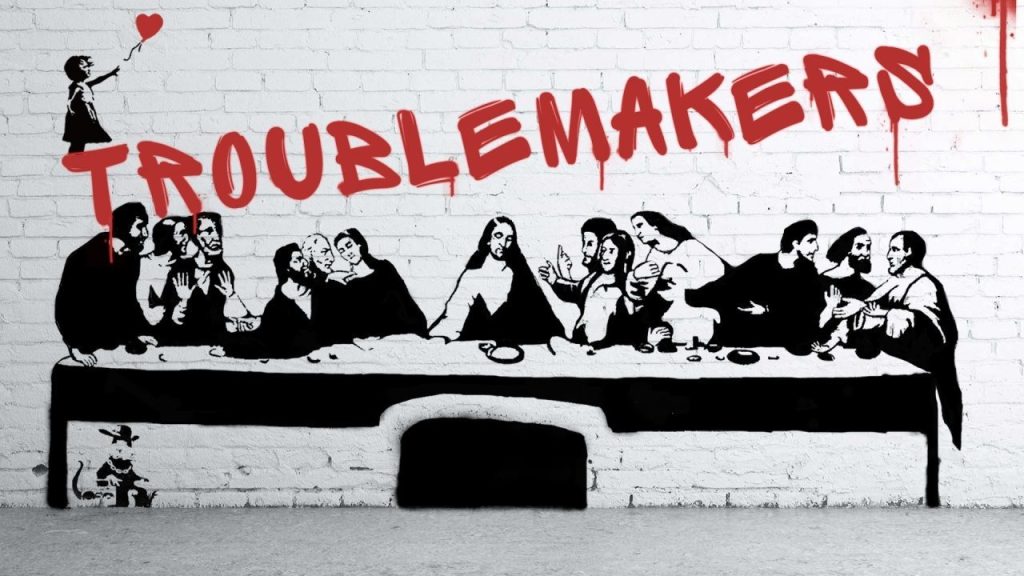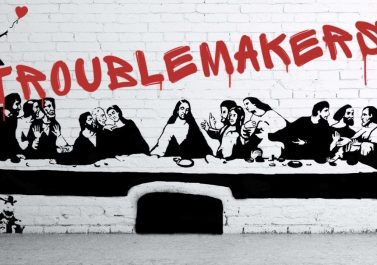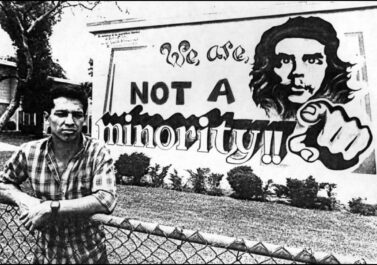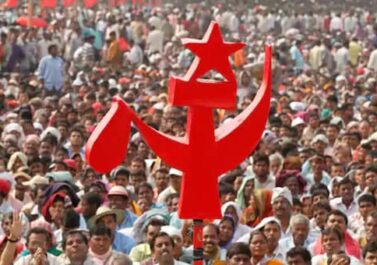
After the first phase of the so-called strike wave the primary question is whether the strikes gave birth to new initiatives of self-organisaton amongst participating workers. This is difficult to assess. What we can see are various initiatives within the broad left to organise ‘rank-and-file’ structures and meetings, which we generally see as a good thing. We also see an international dimension of this development, e.g. when we take into account the recent ‘Streikkonferenz’ in Germany, which attracted 1,500 participants.
One such meeting in the UK was the Troublemakers conference in Manchester in July 2023, organised by people from StrikeMap and OrganiseNow, amongst others. Another one will be the ‘Workers’ Summit’ in London in September. Some of us took part in the Troublemakers conference and share these reflections for discussion. We do this from a perspective that working class self-organisation and a wider communist strategy is necessary in order to overcome the deadlock of the various strikes. This is a perspective which was not explicitly foregrounded by the organisers of the conference, in this sense our critique has, at least to a certain degree, an external character. We have discussed and written about this tense relation between ‘strategy for the strike wave’ and a more general political strategy before.
There were around 150 people present at the conference, most of them belonging to various leftist groups, primarily of Trotskyist origins, but with direct rank-and-file union experience. In terms of unaffiliated workers’ participation we met care workers from the Pan African Workers Association, a Nepali seasonal agricultural worker and two workers who went on strike at Chep, a pallet manufacturer – but who didn’t talk about their experience during the official part of the conference. It was noticeable that the so-called ‘rank-and-file’ unions, such as UVW, IWGB or IWW, had no visible presence.
To start on a positive note, the conference was well organised, the atmosphere friendly and of a spirit of solidarity. Some of the contributions, for example the one on the initiative of Royal Mail workers to oppose the CWU trade union negotiated deal, were particularly insightful.
Before we go more into detail we want to raise our main criticism of the conference. The criticism can’t be that there were not more ‘workers’ in the room, as this is not something that is easily achieved. The criticism is that the focus of the conference was on ‘practical organising’ (how to start a campaign, a workplace bulletin etc.), while most of the people in the room had plenty of experience of organising. The presentation of the various organising efforts was primarily done in a motivational, rather than a self-critical style. What was completely lacking was a political assessment of the strike wave itself, e.g. which were the advanced points, what were the main divisions, where were potentials for generalisation, what is the balance of power and wider context. There was no attempt to understand the failure of the main ‘programmatic and organisational effort’ that came out of the strike wave, which was the ‘Enough is Enough’ campaign. If you have a room full of politicos and you don’t have a political debate about the inner tendencies and general context of the strike wave, you have a problem. At the same time many people expressed that it was a strength of the conference that the various political groups did not lecture each other about how bad the Tories are or that the main problem is capitalism, but instead focussed on ‘practical things’. And they are right, but this only means that the primary problem is an inability to discuss strikes politically and strategically without applying the usual ‘political’ schemata or slogans.
Perhaps the most prevalent of such schemata which limited some of the discussions at the conference was the concept of the ‘rank-and-file’ itself. Here we move from a criticism of the conference, which was explicitly a ‘rank-and-file’ conference, to a criticism of a certain type of political thought and practice – but we will try to express this criticism using concrete examples from the conference.
The general problem with the rank-and-file
The rank-and-file approach starts from the traditional understanding that trade unions are the primary workers’ organisations, but that, at least in the global north, these are dominated by a strata of paid officials, the so-called bureaucracy, that develop a separate interest from the shop-floor workers. This is, of course, a true description. The problem arises when most of the limitations and weaknesses of strikes are explained by referring to the weakness of the rank-and-file and the power of the official apparatus. This ignores that the rank-and-file of the union might also feel compelled to obey the restrictive strike laws, because they also want to protect the union resources from potential legal fines or repression, or themselves from victimisation. The rank-and-file of a particular union might also prioritise their own profession and sector vis-a-vis a general working class interest – or want to prioritise their union vis-a-vis ‘competing’ unions. The rank-and-file might also be stuck in formalities of representation which hinder the wider participation of workers. In this sense an analysis of the actual strength and weaknesses of strikes will have to dig deeper than the formal surface of the rank-and-file and the bureaucracy. This limitation of the rank-and-file approach is not just due to false consciousness, but due to a conscious political strategy of most of the present groups, which see the main aim in winning control over the union apparatus via rank-and-file initiatives, as a social and material power base for their party projects. In contrast, we see rank-and-file union structures as places where we can meet fellow workers, where we can broaden the scope for debate and collective experiences, but where we also prepare ourselves for the moment when we have to break away from the formal and legal framework of the union and create independent struggle and political committees. Without defining the political subject, we lose sight of how we can plan our struggles beyond the sectoral and professional boundaries held in place by the unions and the law. Focusing too much on how to win ballots, while necessary work, risks leading us to lose sight of the working class in its entirety – something that much of the discussion at Troublemakers tended towards.
So how did the rank-and-file approach limit the discussion about strikes at the conference?
During the workshop ‘Fallen out of love with your union’ comrade Ray, a Unite aerospace rep, explained the concept of the rank-and-file and how changes in the union leadership and their relation to the Labour Party influence the potentials for rank-and-file activity. He used the comparison of the British Airways industrial dispute in 2010 under the then general secretary Len McClusky with the British Airways dispute during the pandemic under the current leader Sharon Graham to demonstrate that the latter allowed for a more militant mobilisation. This was also due to the fact that in 2010 the union hierarchy bowed to the pressure from the Labour Party to de-escalate the dispute. While these are factors that have to be taken into account, the problem goes deeper. Comrades who work at Heathrow airport and who produced a strike bulletin during the pandemic clearly saw that Unite was happy to call off a strike of airport cargo workers who were working overtime at that point and therefore managed to obtain a good deal, instead of using the structural power of the cargo workers to defend conditions of workers in the passenger air-traffic, who were threatened with fire-and-rehire at the time. Here we see that even within one workplace such as Heathrow airport – which is formally divided into different companies – the union might prefer to satisfy the immediate interest of the ‘rank-and-file’, in this case the cargo workers, rather than arguing for a wider workers’ interest. The latter is difficult to enforce, even against the union’s own members, and would also come up against the restrictive strike laws. The point here is that these dynamics cannot adequately be explained or criticised within the framework of the rank-and-file. The subsequent short and rather symbolic strikes against fire-and-rehire at British Airways and Heathrow airport lacked the power to defend their conditions.
Another example was the workshop organised by NHS Workers Say No. NHS Workers Say No is a mass campaign that pushed the demand for a 15% pay increase and which gathered enough momentum to influence the pay demands of the various trade unions in the NHS. During the pay dispute the campaign published leaflets with relevant information, e.g. ballot times of all involved unions or arguments for an above inflation pay increase. The call for cross-union activity was of major significance, given the splintered union landscape in the NHS. In this sense it is probably the most dynamic national workers’ campaign formally outside of the trade unions, which inspired worker militants in other sectors to do the same, e.g. Posties Say No, Educators Say No or Public Servants Say No, all opposing the ‘bad deals’ of their respective union leaderships.
Still, the campaign is caught in a certain kind of loop: the organisation of the actual strike activity is left to the trade unions, which limits the Say No campaign to appeals for the ‘rank-and-file’ to put pressure on the leadership. To give an example of what this ‘rank-and-file’ looks like: two of our comrades work at a major hospital with 10,000 workers and seven different trade unions. The main representatives of the joint-union committee opposed the proposal of a visible joint-union assembly in front of the hospital during the run-up of the pay dispute. The biggest union Unison has 2,000 members in the hospital, out of which 7 attended the annual general meeting. In this situation you can of course try to get other colleagues who are more militant involved in the union and change the current ‘rank-and-file’ leaders, but that is a longer-term and frustrating endeavour. For the concrete need to organise a workers’ assembly before the pay strikes started, the focus of NHS Workers Say No on the rank-and-file was of no help. The campaign is largely online and in our local case the NHS Workers Say No rallies that were organised previously were held in the town centre and attracted more Green Party politicians than health workers. As far as we are aware there is only one local NHS Workers Say No group that has more physical presence, which is the one in Sheffield, publishing a small local bulletin. What is the point here? The point is that NHS Workers Say No as a rank-and-file focussed initiative doesn’t envision and prepare itself for the fact that it might have to act as an actual body of struggle, leaving this instead to the official unions. As a result the general mood on the various WhatsApp forums is one of constant frustration and complaints about ‘the leadership’. The point is not that NHS Workers Say No in its current form and capacity could just replace the union structures, but that this future necessity is not built into the wider strategy and practice. The comrades from NHS Workers Say No said at the end of the workshop that they will try to establish the campaign more formally – we will have to see if that will be limited to ‘internal structures of representation’ or whether it will include setting up local face-to-face structures parallel to the unions.
In the following we present short summaries of workshops and a general conclusion.
CWU strike: organise the militant minority, rather than the rank-and-file?
During the workshop ‘Fallen out of love with your union?’, Andy, a postal worker comrade active in the CWU, talked about the initiative to reject the CWU deal through a ‘posties say no’ campaign. He is one of the 400 victimised reps who did not get reinstated, pointing out that this was a previous red line for the union: if the employer victimises union reps, there would be industrial action. Now the union negotiated deal left the future of the victimised reps in the precarious conditions of individual reviews. Andy delivered a good description of how the CWU leadership tried to go ‘through the ranks’ of the union hierarchy to get the deal accepted. The £900 extra payment negotiated with Royal Mail management was a final sweetener, not only to accept the victimisation, but also the fact that there is now a two tier workforce: newer workers are working 6 hours per week ‘unpaid’ compared to those colleagues on old contracts. Andy insisted that it is about ‘organising the militant minority’, which seems a little more concrete than the ‘rank-and-file’. What was missing in the discussion of the CWU strike was an assessment of the balance of forces: would an all-out indefinite strike have had the power to break a prepared management that is out for a massive process of restructuring? What are the potentials for mobilising other sectors of the CWU, for example workers at British Telecom, to add to the fighting power at Royal Mail? What is the situation at private parcel services and can the strike mobilisation address workers more actively there, outside of the formal boundaries of Royal Mail – given that they are the main unwilling and perhaps even unconscious strike breakers?
Workplace bulletin session
About 10-15 people took part in the session, ran by Notes From Below (NfB). There was a presentation of the ‘University Worker’ and ‘Marked Absent’, both of which were strike bulletins produced by comrades from NfB in Higher Education and Secondary Education respectively. An Alliance for Workers Liberty (AWL) London Underground worker was also present with copies of ‘Tubeworker’. In terms of discussion, there was a lot of focus on how to make bulletins catchy with an over-focus on the use of ‘memes’. It seems that the point of a workplace bulletin was missed slightly despite the presenters focus on the fact that the process of producing a bulletin is as much the point as its distribution. The AngryWorkers and AWL participants tried to draw focus to the fact that an effective bulletin is a political intervention and an attempt to create an institution of lasting organisation. Other participants saw the bulletin as a fun way of trying to entice workers into participation in a union.
Building a campaign and winning a ballot
In practice this session was more of a series of reports on recent campaign experiences rather than a tutorial or technical introduction, and a level of assumed knowledge might have raised problems for total beginners (although most people in the room seemed fairly experienced).
Ameen Hadi, a union full-timer, began with a quite general presentation about the NW TUC Black Workers Committee. Garfield Hylton, branch secretary of the GMB Amazon Workers Branch, then gave an overview of Amazon organising in Coventry. He explained that after the experience of the wildcat strikes the workers decided that they wanted to formalise their organising and work with a union, but have retained a culture of independence from the GMB. He claimed that they work alongside the union where that suits them and take an independent course when it doesn’t (e.g. making links with climate activists, which the union disapproves of). During the recent ‘Amazon Shut Down’ in Coventry it seemed though that the strike was pretty firmly in the hands of GMB and the union apparatus, who managed to parade the workers for an action that seemed more like a publicity stunt, rather than a militant blockade. Emma Runswick, deputy chair of the BMA, then talked through the BMA’s application of McAleveyian industrial tactics, for example explaining some efforts the BMA have made to make their strikes more inclusive (e.g. supporting leave, cover or shift swaps to prevent strike-related deductions impacting maternity pay; never holding strikes of more than 10 consecutive shifts to avoid risking visas).
Building the rank and file through our communities
The session opened with a presentation to a packed room by Clark McAllister about the Migrant Farmworker Solidarity project (a couple of farm workers were present but didn’t speak). The Landworkers’ Alliance have recently published a report containing a workers’ inquiry based on the work of the group.
This was followed by Francis Garikayi and several other speakers from the Pan-African Workers Association (mainly Zimbabwean care workers). Organise Now helped them set up the network, which now has over 1000 members in a national Whatsapp group. They encourage their members to join whatever union makes sense for their workplace and maintain coordination through the association. The network is still young (4 months old) and at the moment seems to mostly involve informal support and sign-posting to unions. Several of the speakers had been involved in underground trade union organising before coming to the UK, experience which has clearly contributed to the association’s rapid development.
At the same time that this session exhibited excellent examples of independent workers’ self-organisation in some of the most brutal recesses of the labour market, it focused very specifically on the experience of migrant workers on precarious and short-term visas. This obviously isn’t a problem in itself, but the conference would also have benefited from some broader reflections on attempts to embed industrial struggles beyond the workplace more generally.
Further conclusions
Given the massive predominance of competing Trotskyist groups we were initially surprised that the conversations generally felt so constructive and non-confrontational, but on reflection there are probably a few reasons for this. First, as a new conference that was not obviously dominated by one specific political group, most participants seemed to arrive unsure of what to expect and this probably translated into a more cautious or tentative approach. Second, since the discussions generally remained on the level of ‘the rank-and-file versus the bureaucracy’ there was less scope for controversy. More concrete strategic debates would have probably gotten more hairy. Third, it could also just be that most of these groups are in relative crisis and therefore less out for a fight. The fact that there are three, four different iterations of these conferences is still an expression, though, of intra-left competition, which was criticised in the final round of the conference. Still, the ‘call for unity’ should not drown out a ‘call for clarity’.
There was a certain nostalgia for the supposed unions of the 1980s, as they exist in the abstract. On the one hand it is good that there is a will to build fighting institutions of the working class and that people are looking to recent historical experience for a framework of this project, on the other there is a rose-tinted glasses effect that seems to remove any contradictions in the unions in the 1970-1987 period. Again, this is understandable. The unions in the UK are a shallow husk of their combative selves in the postwar era, but this comparison neatly obscures the unions’ role in limiting the working class in its struggles, using their institutional strength to the end of co-managing the economy and labour market with the state and the bosses.
In some ways the day felt quite in step with the moment. There were some moments of more advanced strategic reflection and analysis, but not loads. There were some militant workers drawn in from beyond the existing far-left, but not loads. A baby step but not a leap. Some seemed prepared to accept that and felt it would have been artificial to try and force a structured organisation into existence prematurely. Others are determined to see a national rank-and-file organisation as an outcome from the day. The main initiatives that could be carriers of such an organisation seem to be the various emerging ‘Say No’ campaigns. We’ll see what happens next.



